A blog about how-to, internet, social-networks, windows, linux, blogging, tips and tricks.
11 December 2018
What Happens When You Quit Social Media? 6 Things I Learned

In 2013, I deleted all of my social media accounts. Now, years later, I’m glad I took that “extreme” step. If you’re planning to quit social media yourself, you might have questions about what comes next. Speaking from my own experience, here’s what you can expect.
1. Unexpected Reactions
When I quit social media, I encountered extremes of reactions from friends and strangers alike. First, there was genuine concern from people who wondered if something had gone wrong in my digital life. A few people thought I was being contrary and tried to either cajole or coerce me into returning. I also received scornful looks and you-will-be-back-in-a-week smirks.
That I was more willing to meet people in person got ignored. That I refused to “stop being antisocial” online was the topic of never-ending debate.
Now that social media detoxes have caught on, you’ll probably have to deal with far fewer polarizing reactions than I did. Some people might even appreciate your decision and draw inspiration to get off social media themselves.
In any case, eventually, those around you will accept your decision or at least, their reactions won’t affect you one way or the other. Be sure to have a standard line ready to explain your absence from social media while making small talk.
2. Feeling Directionless Online

Every time you open your browser, you might be at a loss to decide what to do. You won’t know where to go next, because your go-to web hangouts—Facebook and Twitter—are gone. But don’t worry. This won’t last long, because you’ll soon discover distractions of a different kind. You might even find more time to learn a new hobby. I latched on to interesting newsletters and feeds as a replacement for social media.
Planning to quit social media to avoid information overload? Watch out for the continued temptation of social networking sites like Twitter and Instagram. These sites let you browse their contents without an account.
3. Being Out of the Loop
You know those moments when everybody knows what’s going on and you’re the only clueless person around? Expect many more of them.
Not staying up to date on Facebook statuses, Instagram updates, and Twitter goings-on equals missing out on all the juicy references in conversations. Quite often, you won’t get jokes because “you had to be there”. You’ll also have to field requests to join other, often obscure, social networks.
Want to see your best friend’s vacation photos? You’ll have to wait for her to mail them to you. It’s not like you can log in to Facebook or Instagram yourself to see them, can you? Meanwhile, everyone you know has seen them already.
To counter the fear of missing out, you might increase your activity on group messaging apps like Hangouts and WhatsApp. You’ll also need to find alternative, sometimes old-school ways to keep in touch with friends and family. Keep in mind that the solutions need to be convenient for both parties.
4. Limited Access to Certain Sites

Only when you have deleted your Facebook and Twitter accounts will you grasp the extent to which the web depends on these social media giants.
You might have to forgo many interesting services for the sole reason that you don’t have a Facebook or Twitter login to sign up for an account. What happened to good old email signups?
5. Derailed Job Searches
Job hunts are the worst hit by the lack of a social media presence. Awesome social media skills seems like a permanent fixture in job descriptions these days. It’s a pity that social media skills are at times considered more important than the technical skills you need to fulfill a role.
Staying up-to-date on LinkedIn, participating in Twitter chats, joining discussions in Facebook groups; these definitely open up more opportunities to get ahead in your career. (That’s not a bad thing at all.) Naturally, you might feel tempted to resurrect your social media profiles.
6. More Headspace
I have saved the best for last. When you quit social media and get past the first few months of withdrawal symptoms, you’ll begin to enjoy the headspace you have reclaimed.
Life without social media can be quite peaceful. No more comment wars, political rants, inane quotes, and toxic acquaintances to deal with on a daily basis. Also, you’ll have fewer social media-related privacy and security nightmares to worry about.
The biggest gain is the automatic shift in focus from what everyone else is doing to what you’re doing. You score the mental bandwidth you need to do deep work.
Sure, you’ll want to binge on social media feeds a few times a year. Don’t feel guilty when that happens. Indulge yourself occasionally. Seeing the same old stuff you wanted to escape in the first place will put the situation in perspective for you.
When It Comes to Social Media, Never Say Never
You’ll have to stay prepared to jump back into social media because some aspect of your work might demand it. See if you can find a suitable workaround instead.
If not, think of social media as a means to an end and do what you can to make social networks help you at work. At the same time, don’t be afraid to cut down on your social media commitments if they’re detracting from your actual work.
I recreated a couple of social media accounts myself for various reasons. But I promptly deleted them within a few days because I didn’t want to get caught up in a digital whirlwind again.

Many people thrive on and enjoy the kind of dynamic, fast-paced interaction that social media provides. But for many others, social media can have negative effects.
As I see it, there are no definitive right or wrong approaches to social media. There are only those that work or don’t work for you.
Of course, it’s still worth considering if we’re better off without social media. If you think we are and would like to quit it for good, here’s how to delete your entire social media presence. Or if you’d rather improve this part of your life than give it up, there are ways to start enjoying social media again.
Read the full article: What Happens When You Quit Social Media? 6 Things I Learned
Read Full Article
The Best Christmas Music on YouTube

It’s time to light the fire, put up the decorations, and eat your weight in chocolate. Yes, it’s Christmas!
Christmas wouldn’t be complete without the festive tunes to go along with it. So we’ve rounded up the best Christmas music, Christmas songs, Christmas carols, and Christmas playlists to keep you satisfied this holiday season.
Whether you want something to have on in the background as you wrap presents, or something to sing and dance to under the tree, we’ve got you covered with this, the best Christmas music on YouTube.
Christmas Songs on YouTube
If you want to have a sing-a-long, don your party hat, and watch these videos. Christmas is the perfect goldmine for musicians to pen songs about, and below you’ll find a mixture of hits to cover all the festive emotions.
Christmas Pop
It’s not Christmas until you’ve heard Mariah Carey’s feel-good pop hit, “All I Want for Christmas Is You”.
“I’m a very festive person and I love the holidays,” says Carey, so it makes sense that she delivered this uptempo delight. Every single holiday season it smashes its way up the charts, forcing us to jump and dance.
The video features Mariah and her family messing around in the snow, filmed to look like home footage. Because no-one should be alone at Christmas.
Want more Christmas pop? Check out Ariana Grande – “Santa Tell Me” to see the singer and friends bopping in bed, Justin Bieber – “Mistletoe” for the Canadian heartthrob smoldering in the snow, and *NSYNC – “Merry Christmas, Happy Holidays” for Justin Timberlake and co. delighting in a cheesy green-screen video.
Christmas Sadness
Sure, the holiday season is a time for cheer, but there’s also room for sadness too. “Happy Christmas your arse, I pray God it’s our last.” Yes, “The Fairytale of New York” by The Pogues and Kirsty MacColl is hardly full of positivity.
It’s rumored that the song came about after the band’s lead singer was bet by Elvis Costello that they couldn’t come up with a Christmas song that wasn’t slushy. It’s safe to say they achieved it.
Need more Christmas sadness? Dry your eyes with Coldplay – “Christmas Lights” from one of the world’s biggest bands, Tom Chaplin – “Midnight Mass” for the Keane frontman’s bittersweet song, and Marvin Gaye – “I Want to Come Home for Christmas” which was recorded as a tribute to Vietnam troops.
Christmas Classics
According to the Guinness Book of World Records, Bing Crosby’s “White Christmas” is the best selling single of all time. It topped the American charts for 11 weeks when was released in 1942 and went on to sell over 50 million copies globally. Wherever you are in the world, may you dream of a white Christmas—even if that means fake snow.
Shall we keep it retro? Enjoy the cheekiness of Eartha Kitt – “Santa Baby” as she lists her wishes, have the season perfectly summed up in Andy Williams – “It’s the Most Wonderful Time of the Year”, and dream of snowfall with Gene Autry – “Frosty The Snowman”.
Christmas Carols on YouTube
The first Christmas hymn can be dated to 4th century Rome; the songs we recognize as carols were originally communal songs, later sung in church and then associated with Christmas. Whatever your religion, listening to these carols is sure to put a smile on your face.
Hark! The Herald Angels Sing
The University of Cambridge is one of the world’s oldest universities, and the hymns performed by the choir of King’s College have become world-renowned for their magic. If you want the fully traditional, classic hymns to relax with, this video of “Hark! The Herald Angels Sing” for you.
O Holy Night
This hymn has been covered endlessly through the years, but this performance by David Phelps is one of the best. If the power he puts into the vocals, accompanied by the beautiful piano playing, don’t put you in the festive mood, then the chances are nothing will.
O Come, All Ye Faithful
Westminster Abbey is an 11th century abbey in London, England, and is the burial site of many British monarchs. This recording of “O Come, All ye Faithful” was filmed there, and it has everything you would need from a hymn video—members of the public awkwardly singing in their coats, a plastic nativity scene, and beautiful vocals inside an even more beautiful building.
Christmas Music on YouTube
Enough of these words! If all you need is some instrumental Christmas music, these videos are for you. They’re long and the perfect length to have on in the background as you tuck into your turkey or unwrap presents.
Piano
Jazz
Guitar
YouTube Christmas Playlists
Pop one of these playlists on to keep the Christmas cheer rolling automatically, giving you spare hands to put up decorations or build a snowman.
The Muppet Christmas Carol
The Muppet Christmas Carol is one of the best Christmas movies ever made. Yes, I see you waving around It’s a Wonderful Life, Home Alone, Elf, and all the rest. I’m not interested. Those films don’t have Kermit, Fozzie, Gonzo, and gang singing along with Michael Caine. This playlist lets you revel in that delight through the full original motion picture soundtrack.
NOW That’s What I Call Christmas
The Now compilations have been rolling out for decades, but this is the only one you need to be blasting when scoffing mince pies. Featuring great hits like “Last Christmas,” “Wonderful Christmas Time,” and “Walking In the Air,” this playlist will keep the party going all day long.
Christmas for Kids
Christmas is for people of all ages, but there’s no denying that it’s the kids who get the biggest thrills. Opening the advent calendar, counting down the days until Santa Claus arrives—it’s a magical time of year. Help keep them entertained with this playlist full of children’s songs and fun animated videos.
More Christmas Music for Your Listening Pleasure
We hope this Christmas music on YouTube keeps you going through the holidays. However, if you’re still not satisfied, be sure to check out the best websites for Christmas music and the best Christmas songs to stream this holiday season for more options.
Image Credit: SergeyNivens/Depositphotos
Read the full article: The Best Christmas Music on YouTube
Read Full Article
5 Linux Tablets and Tablet Projects Worth Looking Into

Linux was born at a time when PCs were bulky, stationary machines. Now we’re in the era of Apple iPads. Our Android phones have touchscreens, and so do our game consoles. Many of us long to use our favorite open source operating system on a form factor we’ve come to love.
Fortunately, all is not lost. If you want to acquire a touchscreen device that runs Linux, you can! The options aren’t yet plentiful, but they’re growing. Here are some of the current and upcoming Linux tablet projects to keep on your radar.
1. Planet Gemini

Planet Gemini is more a smartphone than a tablet. That said, it’s also more of a PDA than a smartphone. It’s an un-apologetically niche product built for a more technical user. Honestly, you’re more likely to appreciate this Linux-powered device more for being pocketable than for having a touchscreen.
The Gemini has a physical keyboard and a clamshell form factor. When you close it up, there are no outward facing screens or dialing buttons. Still, the Gemini can serve as your phone, as you have the option to order either a 4G-enabled or a Wi-Fi-only version.
The Gemini’s main OS is Android, but it comes with an unlocked bootloader and is able to run other operating systems. You can install Debian Linux, for example. You can also opt for another Linux-based smartphone OS, such as Sailfish.
2. Emperor Linux Tablets

Want to go the conventional route? Look no further than Emperor Linux. This reseller takes existing hardware lines, such as the Lenovo ThinkPad and the Panasonic Toughbook, and installs Linux.
For a couple grand, you can get a capable PC with a screen that will let you enjoy or develop the Linux touch-based experience. Depending on how powerful or durable you want your machine to be, you can easily spend thousands more.
Will your device turn heads? Not likely. These are machines that look more at home in an office or at a work site than on your couch. But if your priority is getting work done, and you have a larger budget, than this may be your best option.
3. RasPad (Raspberry Pi Tablet)
The RasPad is crowdfunded device that offers everything there is to love about the Raspberry Pi, but in a tablet form factor. That makes this a great product for makers and tinkerers. Judging by pledge prices, it’s also likely to be relatively affordable.
If you’ve used a Raspberry Pi, you know the platform is what you want it to be. People have already tinkered with ways to make their Raspberry Pi portable.
Buying a RasPad can save you the time and effort of building your own product. That’s not to say you won’t have any DIY fun. For example, you can make your own Chrome OS or Android device by installing the right operating system.
In an educational or industrial environment, you can hook the tablet up to a robot for use as a control panel. For something more casual, try pairing a gamepad and turning your Raspberry Pi into a mobile gaming device.
4. Librem 11

Librem is a privacy focused company that only ships Linux-powered PC. Similar to System76, it even provides its own Linux-based operating system. Librem’s PureOS has such strong free and open source software cred that it’s earned an endorsement from the Free Software Foundation.
Librem doesn’t sell a laptop with a touchscreen, but the upcoming Librem 11 may become the closest we have to a modern Linux-powered slate. When the device isn’t docked into a keyboard, it’s akin to carrying around an iPad, only with a more fully-featured desktop interface.
PureOS uses the GNOME desktop environment, which feels intended for tablets as much as traditional PCs. This will offer a chance to see what happens when a developer truly puts that to the test. And if you don’t like GNOME, you will have the option to install something else.
Development on the Librem 11 is currently taking a backseat to the Librem 5 smartphone, a touchscreen-based Linux project that many are even more excited about.
5. Youyota (Sailfish OS 2-in-1 Tablet)

The Youyota tablet is a spiritual successor to the short-lived Jolla Tablet that both launched and reached end-of-life in 2015. This newer iteration has an official license from Jolla and an identical form factor. Primary improvements include a bigger battery and increased storage space.
Unfortunately, despite being funded over 250% on Indiegogo, this project has hit a snag. The development team has found that several components are more expensive than anticipated.
Having already exceeded the expected release date by a year, the final product may never arrive. If you love Sailfish OS, all you can do is keep your fingers crossed.
Want to Make Your Own Linux Tablet?
Code execution is all the rage these days, but can your Switch do *this*? ;-) #switchnix pic.twitter.com/NMnBq61tOM
— fail0verflow (@fail0verflow) February 17, 2018
If you already have a touchscreen lying around, it may be tempting to install Linux yourself. This will save you some money, assuming everything works out enough to do what you want to do.
Here are a few options:
- Install Linux on your own Windows tablet or convertible notebook.
- Run Linux on an Android device. You can use a tool dedicated to running Linux on a non-rooted device, such as KBOX. Or you could fire up Linux in an emulator, like Limbo.
- You can run Linux on some consoles such as the Nintendo Switch.
Linux Tablets Have Been a Long Time Coming
Linux tablet projects have come and gone over the years. The KDE community once excited many Linux users with the prospect of a Plasma-powered tablet. Devices such as the Aquaris M10 running Ubuntu and the Jolla Tablet actually came to fruition, but their lives were short.
Still, the dream survives. Thanks to crowdfunding and cheaper open components such the Raspberry Pi, it’s easier for people to take matters into their own hands.
If, on the other hand, you just want a solid Linux PC, even better. There are many great computers that come with Linux!
Image Credit: Gemini PDA/Planetcom
Read the full article: 5 Linux Tablets and Tablet Projects Worth Looking Into
Read Full Article
Coffee Meets Bagel goes anti-Tinder with a redesign focused on profiles, conversations
How do other dating apps compete with Tinder? By further distancing themselves from Tinder’s “hot-or-not” user interface design to focus on differentiating features – like conversation starters, commenting, and richer profiles. Today, another anti-Tinder app is doing the same. On the heels of its $12 million Series B announced earlier this year, the oddly named app Coffee Meets Bagel is today announcing a significant makeover, which includes a change to the way the app works.
Its cleaner, lightweight and more modern design does away with bright, competing colors and other outdated features, the company says. But more notably, it has ditched the big “Pass” or “Connect” buttons – its earlier variation on Tinder’s “like” and “dislike” buttons, which nearly all dating apps have now adopted.
Instead, Coffee Meets Bagel’s new interface puts more emphasis on user profiles – showcasing more of the text, and giving users the option to “heart” the profile or now, even comment.
Before a match takes place, users can tap a new commenting button that allows them to respond to the user’s profile directly, before making a connection. This could help potential matches break the ice or even spark a connection that may not have otherwise happened.
The feature is similar, to some extent, to the commenting feature in Hinge, a relationship-focused app that allows users to directly comment on some aspect of another user’s profile.
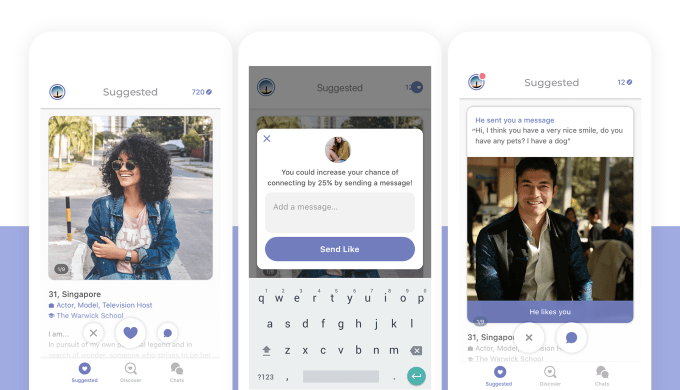
Coffee Meets Bagel says that during its beta testing, members who sent comments to their matches had a 25 percent higher chance of getting liked back. And when comments led to conversations, there was a 60 percent increase in total messages exchanged.
Focusing on enabling better conversations is a good way for other dating apps to combat Tinder, which leaves communication up to the users to initiate, without much guidance. This leads to inboxes filled with “hi’s” and nothing much else to say. By integrating commenting into profiles, however, users will be prompted to start conversations based on something they’ve read – allowing people to connect based on more than just their photos.
The app has also revamped its Discover and Suggested sections to offer seamless scrolling and better navigation, respectively. These sections are less cluttered than before, too, in keeping with the more minimalist spirit. Even the Coffee Meets Bagel logo has gotten a makeover, where the C and B now meet in the shape of heart.
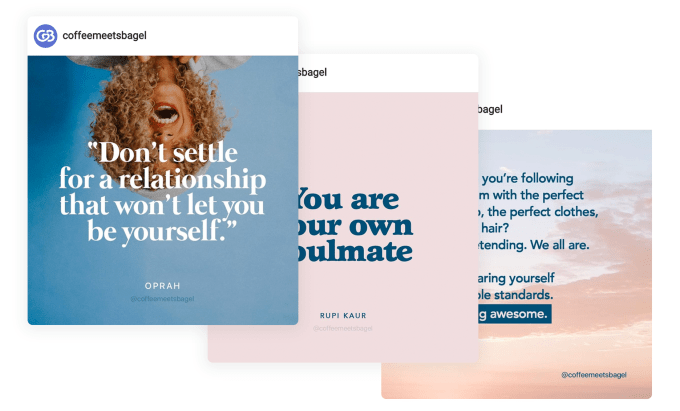
The company’s anti-Tinder stance is shaping up in its social content, too. While Tinder has more recently embraced hook-up culture and the single life with its online publication “Swipe Life,” CMB is instead creating content that’s more inspiring, it says.
“We’re taking a stance against online dating conventions, like ghosting and treating people like profiles. We’re expanding the conversation to the self: self-reflection, self-discovery, and self-love,” the company explains in its announcement.
Coffee Meets Bagel has raised just under $20 million since launching back in 2012, but it’s faced threats from Tinder, which has challenged its model head-on with Tinder Picks – a curated selection of matches for Tinder Gold subscribers, similar to Coffee Meets Bagel’s curated daily picks.
The company’s app has close to 7 million installs to date, according to data from Sensor Tower, and more than $25 million in gross revenue. The revenue is growing over time, the firm also found, with users spending approximately $900,000 in the app last month, up 30% from November 2017.
Read Full Article
Coffee Meets Bagel goes anti-Tinder with a redesign focused on profiles, conversations
How do other dating apps compete with Tinder? By further distancing themselves from Tinder’s “hot-or-not” user interface design to focus on differentiating features – like conversation starters, commenting, and richer profiles. Today, another anti-Tinder app is doing the same. On the heels of its $12 million Series B announced earlier this year, the oddly named app Coffee Meets Bagel is today announcing a significant makeover, which includes a change to the way the app works.
Its cleaner, lightweight and more modern design does away with bright, competing colors and other outdated features, the company says. But more notably, it has ditched the big “Pass” or “Connect” buttons – its earlier variation on Tinder’s “like” and “dislike” buttons, which nearly all dating apps have now adopted.
Instead, Coffee Meets Bagel’s new interface puts more emphasis on user profiles – showcasing more of the text, and giving users the option to “heart” the profile or now, even comment.
Before a match takes place, users can tap a new commenting button that allows them to respond to the user’s profile directly, before making a connection. This could help potential matches break the ice or even spark a connection that may not have otherwise happened.
The feature is similar, to some extent, to the commenting feature in Hinge, a relationship-focused app that allows users to directly comment on some aspect of another user’s profile.

Coffee Meets Bagel says that during its beta testing, members who sent comments to their matches had a 25 percent higher chance of getting liked back. And when comments led to conversations, there was a 60 percent increase in total messages exchanged.
Focusing on enabling better conversations is a good way for other dating apps to combat Tinder, which leaves communication up to the users to initiate, without much guidance. This leads to inboxes filled with “hi’s” and nothing much else to say. By integrating commenting into profiles, however, users will be prompted to start conversations based on something they’ve read – allowing people to connect based on more than just their photos.
The app has also revamped its Discover and Suggested sections to offer seamless scrolling and better navigation, respectively. These sections are less cluttered than before, too, in keeping with the more minimalist spirit. Even the Coffee Meets Bagel logo has gotten a makeover, where the C and B now meet in the shape of heart.

The company’s anti-Tinder stance is shaping up in its social content, too. While Tinder has more recently embraced hook-up culture and the single life with its online publication “Swipe Life,” CMB is instead creating content that’s more inspiring, it says.
“We’re taking a stance against online dating conventions, like ghosting and treating people like profiles. We’re expanding the conversation to the self: self-reflection, self-discovery, and self-love,” the company explains in its announcement.
Coffee Meets Bagel has raised just under $20 million since launching back in 2012, but it’s faced threats from Tinder, which has challenged its model head-on with Tinder Picks – a curated selection of matches for Tinder Gold subscribers, similar to Coffee Meets Bagel’s curated daily picks.
The company’s app has close to 7 million installs to date, according to data from Sensor Tower, and more than $25 million in gross revenue. The revenue is growing over time, the firm also found, with users spending approximately $900,000 in the app last month, up 30% from November 2017.
Read Full Article
Lydia introduces credit lines
French startup Lydia announced a partnership with Banque Casino today for small credit lines. Starting tomorrow, Lydia users in France will be able to borrow as much as €1,000 in just a few seconds.
While Lydia started as a peer-to-peer money transferring app, fintech startups always end up offering credit at some point. It’s hard to make money without offering some form of credit.
Banque Casino is a subsidiary of Casino and Crédit Mutuel. As the name suggests, it’s a bank that can issue credit lines. Lydia has developed a seamless integration with Banque Casino so you can instantly get money from Banque Casino.
The credit feature lets you borrow between €100 and €1,000 and reimburse that credit line over three months. If you’re eligible, you’ll instantly see how much you’ll end up paying after three months.
But the most interesting feature is that you can either get your money instantly on your Lydia account for a fee, or you can wait a couple of weeks to wave this fee.
Combining instant credit with instant spending is key to this feature. Lydia lets you instantly spend money on your Lydia account on e-commerce websites that support Lydia, using Lydia’s debit card, or using a virtual card in Apple Pay, Google Pay or Samsung Pay. And if Lydia wants to replace cash, it needs to be as quick as giving a money bill to someone.
Lydia currently has 1.5 million users; 3,500 people open a Lydia account every day. The company recently released two insurance products for your mobile devices, as well.
Read Full Article
Google launches Istio on GKE
Google today announced an update to GKE, the Google Kubernetes Engine, that brings integrated support for the Istio service mesh to service. Istio support is currently in beta.
While Istio isn’t yet the household name that Kubernetes has become in recent years, for many enterprises it’s an important building block for building their cloud-native platforms.
At its core, Istio is an open source service mesh that helps you connect, monitor and secure microservices on a variety of platforms — one of those being Kubernetes. Istio, and its own sub-components like the Envoy proxy, offer a way to integrate microservices, secure them, and aggregate log data while providing an additional abstraction layer over orchestration services like Kubernetes.
“We truly believe that Istio will play a key role in helping you make the most of your microservices,” write Chen Goldberg, Google Cloud Director of Engineering, and Jennifer Lin, Google Cloud Director of Product Managment, in today’s announcement. “One way Istio does this is to provide improved visibility and security, making working with containerized workloads easier. With Istio on GKE, we are the first major cloud provider to offer direct integration to a Kubernetes service and simplified lifecycle management for your containers.”
Goldberg and Lin also stress that Istio allows developers and operators to manage applications as services and not as lots of different infrastructure components. In addition, they note that Istio allows you to encrypt all your network traffic. Unsurprisingly, Istio on GKE also comes with an integration into Stackdriver, Google Cloud’s monitoring and logging service.
Istio first launched in the middle of 2017. The project is the result of a collaboration between Google, IBM and Lyft. It hit its version 1.0 release this summer, at the end of July, and companies like Datadog, SolarWinds and others have since built plugins to integrate it into their service. The Cloud Foundry project, too, is making Istio a core part of its service by using it as the core of its new traffic routing stack.
Read Full Article
The Cloud Native Computing Foundation adds etcd to its open source stable
The Cloud Native Computing Foundation (CNCF), the open source home of projects like Kubernetes and Vitess, today announced that its technical committee has voted to bring a new project on board. That project is etcd, the distributed key-value store that was first developed by CoreOS (now owned by Red Hat, which in turn will soon be owned by IBM). Red Hat has now contributed this project to the CNCF.
Etcd, which is written in Go, is already a major component of many Kubernetes deployments, where it functions as a source of truth for coordinating clusters and managing the state of the system. Other open source projects that use etcd include Cloud Foundry and companies that use it in production include Alibaba, ING, Pinterest, Uber, The New York Times and Nordstrom.
“Kubernetes and many other projects like Cloud Foundry depend on etcd for reliable data storage. We’re excited to have etcd join CNCF as an incubation project and look forward to cultivating its community by improving its technical documentation, governance and more,” said Chris Aniszczyk, COO of CNCF, in today’s announcement. “Etcd is a fantastic addition to our community of projects.”
Today, etcd has well over 450 contributors and nine maintainers from eight different companies. The fact that it ended up at the CNCF is only logical, given that the foundation is also the host of Kubernetes. With this, the CNCF now plays host to 17 different projects that fall under its ‘incubated technologies’ umbrella. In addition to etcd, these include OpenTracing, Fluentd, Linkerd, gRPC, CoreDNS, containerd, rkt, CNI, Jaeger, Notary, TUF, Vitess, NATS Helm, Rook and Harbor. Kubernetes, Prometheus and Envoy have already graduated from this incubation stage.
That’s a lot of projects for one foundation to manage, but the CNCF community is also extraordinarily large. This week alone, about 8,000 developers are converging on Seattle for KubeCon/CloudNativeCon, the organization’s biggest event yet, to talk all things containers. It surely helps that the CNCF has managed to bring competitors like AWS, Microsoft, Google, IBM and Oracle under a single roof to collaboratively work on building these new technologies. There is a risk of losing focus here, though, something that happened to the OpenStack project when it went through a similar growth and hype phase. It’ll be interesting to see how the CNCF will manage this as it brings on more projects (with Istio, the increasingly popular service mesh, being a likely candidate for coming over to the CNCF as well).
Read Full Article
Google CEO Sundar Pichai thinks Android users know how much their phones are tracking them
Google CEO Sundar Pichai thinks Android users have a good understanding of the volume of data Google collects on them, when they agree to use the Android mobile operating system. The exec, who is testifying today in front of the House Judiciary committee for a hearing entitled: Transparency & Accountability: Examining Google and its Data Collection, Use and Filtering Practices, claimed that users are in control of the information Google has on them.
“For Google services, you have a choice of what information is collected, and we make it transparent,” Pichai said, in response to Chairman of the House Judiciary Committee Rep. Bob Goodlatte (R-VA)’s questioning.
The reality is that most people don’t read user agreements in full, and aren’t fully aware of what data their phones and apps are able to access. Even on Apple’s platform, known to be fairly privacy-forward, apps have been collecting user data – including location – and selling it to third parties, as noted by a recent The New York Times investigation.
Google’s defense on the data collection front is similar to Facebook’s – that is, Pichai responded that Google provides tools that put users in control.
But do they actually use them?
“It’s really important for us that average users are able to understand it,” said Pichai, stating that users do understand the user agreement for Android OS.
“We actually…remind users to do a privacy checkup, and we make it very obvious every month. In fact, in the last 28 days, 160 million users went to their My Account settings, where they can clearly see what information we have – we actually show it back to them. We give clear toggles, by category, where they can decide whether that information is collected, stored, or – more importantly – if they decide to stop using it, we work hard to make it possible for users to take their data with them,” he said.
The 160 million users sounds like a large number, but at Google’s scale, where numerous products have over a billion users apiece, it’s not as big as it seems.
In addition, it has become clear that simply “opting out” of Google’s data collection methods is not always enough. For example, earlier this year, it was discovered that Google was continuing to track users’ location even when users had explicitly turned the Location History setting off – a clear indication they did not want their data collected or shared.
Further in the hearing, Pichai was asked if Google could improve its user dashboard and tools to better teach people how to protect their privacy, including turning off data collection and location tracking.
“There’s complexity,” Pichai said, but admitted this is “something I do think we can do better.”
“We want to simplify it, and make it easier for average users to navigate these settings,” he continued. “It’s something we are working on.”
Read Full Article
Huawei, Google, and the tiring politics of tech
The defining question of the 21st century is pretty simple: who owns what? Who owns the telecommunications infrastructure that powers our mobile devices? Who owns the OS that powers those devices? Who owns our data?
Today, we see these intersecting arcs with two prominent tech leaders mired in legal and political processes.
TechCrunch is experimenting with new content forms. This is a rough draft of something new – provide your feedback directly to the author (Danny at danny@techcrunch.com) if you like or hate something here.
In Canada, we have day three(!) of the bail hearing for Huawei head of finance Meng Wanzhou (孟晚舟), who was arrested at the request of the U.S. last week. And on Capitol Hill today, Sundar Pichai, the CEO of Google, is testifying in front of the House Judiciary Committee, starting a few minutes ago at 10am.
These may be pedestrian proceedings, but they are riven with deep debates over the meaning of ownership. Meng was arrested for supposedly selling equipment to Iran through intermediaries in violation of U.S. sanctions. Huawei is a Chinese company, but uses American intellectual property in its products. Thus, America claims worldwide jurisdiction over the company, since it owns the patents beneath Huawei’s products.
Meanwhile, Pichai is testifying over a number of concerns, including data privacy (i.e. data ownership) and Project Dragonfly, the company’s attempt to re-enter China. He also has to contend with another data breach bug discovered yesterday in Google+. Is Google an American “owned” company (as Pichai will attempt to paint it today), or is it a global company owned by shareholders with obligations to enter China?
These aren’t simple questions, which is why the broader question of ownership will be so important for this century. Despite the win-win attitude of free traders, the reality is that much of technology ownership is monopolistic owing to barriers to entry – there are only a handful of telco equipment manufacturers, public clouds, mobile OSes and search engines out there. Whoever owns that property is going to get rich at the expense of others.
That’s why the US/China trade conflict is an irreconcilable tug-of-war.
For China, a developing country by most metrics even if it has glittering cities like Shanghai, owning that technological wealth is crucial for it to reach the zenith of its growth. It cannot become rich without becoming a technology power, a manufacturing power, and a consumer market capital all at once. And it views with deep suspicion American blocks on wealth transfers. Isn’t this just a way to keep the country down, to replay the century of humiliation all over again?
For the U.S., China’s constant conniving to pilfer American intellectual property undermines U.S. economic hegemony. China does want to steal plans for airplanes, and semiconductors, and other high-tech goods. Of course, it eventually wants to have the human capital and know-how to build these themselves, but first it has to catch up. America, fundamentally, doesn’t want it to catch-up.
As more and more wealth derives from technology, technology = politics becomes the bedrock law.
That’s frankly tiring for someone who just loves great products and wants to see massive technological progress for everyone regardless of nationality. But political symbolism is increasingly a language that Silicon Valley and the tech industry writ large have to understand.
Why Oath keeps Tumblring (now with a price tag)

Last week, I wrote a bit of a screed on why TechCrunch’s parent company, Oath, is struggling so badly:
Oath has a problem:* it needs to grow for Wall Street to be happy and for Verizon not to neuter it, but it has an incredible penchant for making product decisions that basically tell users to fuck off. Oath’s year over year revenues last quarter were down 6.9%, driven by extreme competition from digital ad leaders Google and Facebook.
Now, we know the costs of those product decisions, as well as the greater challenges in the digital advertising market. Verizon announced today that it will write down the value of Oath by $4.6 billion. That will change Oath’s goodwill value from $4.8 billion to $0.2 billion in the fourth quarter. Yikes.
This was a necessary accounting valuation change, and one that recognizes the challenges that Oath faces. As the filing said:
Verizon’s Media business, branded Oath, has experienced increased competitive and market pressures throughout 2018 that have resulted in lower than expected revenues and earnings. These pressures are expected to continue and have resulted in a loss of market positioning to our competitors in the digital advertising business. Oath has also achieved lower than expected benefits from the integration of the Yahoo Inc. and AOL Inc. businesses.
The upside is that Oath still has many, many millions of users every month. It just needs to figure out what to do with all of those eyeballs to build a sustainable business.
Can the West build anything?

Photo by VictorHuang via Getty Images
Seriously, from the Financial Times:
The capital should have been celebrating the opening of the east-west London railway, the biggest construction project in Europe, this week. But Crossrail announced in August that it would not begin operation until autumn 2019 at the earliest.
Even that now seemed “wildly optimistic”, one person close to the project said, given the problems with signals, trains and stations leading to “growing panic” among TfL executives. A number of people close to the project now say it may not be ready until late next year.
Crossrail is one of the most important subway projects in the world, designed to dramatically increase capacity in London’s Underground on the east-west axis. But it is just one of a series of major setbacks in infrastructure costs in the West. Meanwhile in California from Connor Harris at City Journal:
Ten years later, supporters have ample cause to reconsider. CAHSR’s costs have severely escalated: the California High-Speed Rail Authority (CHSRA) now estimates that the train’s core segment alone, from San Francisco to Los Angeles, will cost from $77 billion to $98 billion. Promises that private investors would cover most of the costs have fallen through. Forecasts for the project’s completion date and travel times have also slipped. The fastest trains in the CHSRA’s current business plan have a running time of over three hours, and the first segment of the line—San Jose to Bakersfield, almost 200 miles short of completion—won’t open until 2029.
I want high-speed rail, and I want new subways. I just don’t want new subways that cost billions of dollars per mile, and I don’t want high-speed rail at $100 billion.
The inability of Western countries to build infrastructure within any period of time and within any sort of budget is just mesmerizing. What we are left with is raising the speed limits on subways in New York City from 15 MPH to something a bit more reasonable.
I have talked previously about the need for more startups in this space:
California is home to two very different innovation worlds. For the readers of TechCrunch, there is the familiar excitement of the startup world, with startups working on longevity and age extension, rockets to Mars, and cars that drive themselves. Hundreds of thousands of entrepreneurs, engineers, and product managers are building these futures every day, often on shoestring budgets all in the hope of seeing their solution come to fruition.
Then, there is the “innovation” world of California’s infrastructure. Let’s take the most prominent example, which is the bullet train connecting southern to northern California. The train, first approved in a bond authorized by voters in 2008, is expected to have its first passengers in 2025 — three years after the original target of 2022.
That’s roughly 17 years start to finish, or older than the ages of Facebook (14 years) and the iPhone (10 years) are right now. Given that environmental reviews aren’t even slated to come in until 2020, it seems hard to believe that the route will maintain its current schedule.
Startups, we need your innovation in this space desperately. It’s a trillion dollar market ready for anything that might make these projects move faster, and cost less.
Quick Bites
My quick bites turned into full bites above.
What’s next
I am still obsessing about next-gen semiconductors. If you have thoughts there, give me a ring: danny@techcrunch.com.
Thoughts on Articles
The Increasingly United States – I read this book this weekend. Probably best to just read the reviews for most readers, although if you like modern political science research, this has about all the techniques you can do in American studies these days.
The core thesis is that the notion that “all politics is local” is completely bunk on two dimensions. Voters increasingly vote for candidates at every level of government using the same litmus tests, and they also get their information about politics exclusively from national sources. That basically means city councilors are debating immigration policy (which they have zero control over) rather than trash policy. It also explains the rising polarization in Congress — with less local issues to debate, there are just no opportunities afforded to build coalitions.
The book charts the pathways through which this nationalization takes place, and they will be intimately familiar to most readers (campaign finance changes, national media markets, nationalized policy planning, etc).
The thesis though raises a number of questions. First, how will local issues (zoning, trash pickup, etc.) get the attention they need to make our cities livable and thriving? Second, how can we fund local media so that voters have differentiated visibility into what is happening in their own backyard? These questions aren’t easy to answer, but we must if we want our federal-style system to function the way the founders intended.
The Death of Democracy in Hong Kong by Jeffrey Wasserstrom. A short and emotional look back at the failure of Hong Kong’s Umbrella Movement in 2014 and its ramifications.
Lean In’s Sheryl Sandberg Problem by Nellie Bowles. What does an organization do when the reputation of its founder and major icon turns sour? Lean In is trying to find out. Good if a bit lengthy, but I’m starting to get tired of the constant anti-Sandberg coverage.
Reading docket
What I’m reading (or at least, trying to read)
- Huge long list of articles on next-gen semiconductors. More to come shortly.
- Inside China’s audacious global propaganda campaign | News | The Guardian
- Outgrowing Advertising: Multimodal Business Models as a Product Strategy – Andreessen Horowitz
Read Full Article
Watch Google CEO Sundar Pichai testify in Congress — on bias, China and more
Google CEO Sundar Pichai has managed to avoid the public political grillings that have come for tech leaders at Facebook and Twitter this year. But not today.
Today he will be in front of the House Judiciary committee for a hearing entitled: Transparency & Accountability: Examining Google and its Data Collection, Use and Filtering Practices.
The hearing kicks off at 10:00 ET — and will be streamed live via our YouTube channel (with the feed also embedded above in this post).
Announcing the hearing last month, committee chairman Bob Goodlatte said it would “examine potential bias and the need for greater transparency regarding the filtering practices of tech giant Google”.
Republicans have been pressuring the Silicon Valley giant over what they claim is ‘liberal bias’ embedded at the algorithmic level.
This summer President Trump publicly lashed out at Google, expressing displeasure about news search results for his name in a series of tweets in which he claimed: “Google & others are suppressing voices of Conservatives and hiding information and news that is good.”
Google rejected the allegation, responding then that: “Search is not used to set a political agenda and we don’t bias our results toward any political ideology.”
In his prepared remarks ahead of the hearing, Pichai reiterates this point.
“I lead this company without political bias and work to ensure that our products continue to operate that way. To do otherwise would go against our core principles and our business interests,” he writes. “We are a company that provides platforms for diverse perspectives and opinions—and we have no shortage of them among our own employees.”
He also seeks to paint a picture of Google as a proudly patriotic “American company” — playing up its role as a creator of local jobs and a bolster for the wider US economy, likely in the hopes of defusing some of the expected criticism from conservatives on the committee.
However his statement makes no mention of a separate controversy that’s been dogging Google this year — after news leaked this summer that it had developed a censored version of its search service for a potential relaunch in China.
The committee looks certain to question Google closely on its intentions vis-a-vis China.
In statements ahead of the hearing last month, House majority leader, Kevin McCarthy, flagged up reports he said suggested Google is “compromising its core principles by complying with repressive censorship mandates from China”.
Trust in general is a key theme, with lawmakers expressing frustration at both the opacity of Google’s blackbox algorithms, which ultimately shape content hierarchies on its platforms, and the difficulty they’ve had in getting facetime with its CEO to voice questions and concerns.
At a Senate Intelligence committee hearing three months ago, which was attended by Twitter CEO Jack Dorsey and Facebook COO Sheryl Sandberg, senators did not hide their anger that Pichai had turned down their invitation — openly ripping into company leaders for not bothering to show up. (Google offered to send its chief legal officer instead.)
“For months, House Republicans have called for greater transparency and openness from Google. Company CEO Sundar Pichai met with House Republicans in September to answer some of our questions. Mr. Pichai’s scheduled appearance in front of the House Judiciary Committee is another important step to restoring public trust in Google and all the companies that shape the Internet,” McCarthy wrote last month.
Other recent news that could inform additional questions for Pichai from the committee include the revelation of yet another massive security breach at Google+; and a New York Times investigation of how mobile apps are location tracking users — with far more Android apps found to contain location-sharing code than iOS apps.
Read Full Article
Capture lets you grab real 3D models with your iPhone X’s powerful camera
Three dimensional modeling used to be hard. It used to require something at least as big as the Xbox Kinect to get really high quality scans you needed high-powered laser sensor systems. Now all you need is your phone and Capture.
Capture is a proof-of-concept for a company called Standard Cyborg led by Jeff Huber and Garrett Spiegel. These YCombinator grads have worked in a number of high-profile vision startups and raised $2.4 million in seed from folks like Scott Banister, Trevor Blackwell, and Jeff Huber.
They launched the app on December 3 and it’s already making 3D waves. The tool, which uses the iPhone X’s front camera and laser scanning system to create a live color point cloud, can create 3D models that you can view inside the app or in an AR setting. You can also export them into a USDZ file for use elsewhere. The app is actually a Trojan horse for the company’s other applications including a programming framework for 3D scanning.

“We are at the bleeding edge – deploying 3D dense reconstruction and point cloud deep learning on mobile devices,” said Huber. “We package up this core technology for developers, abstracting away all the math and GPU acceleration, and giving them superpowers in just 3 lines of code.”
I’ve tried the app a few times and the resulting scans are still a little iffy. You have to take special care to slowly scan all facets of an object and if you move, as you see below, you end up with two noses. That said it’s an amazingly cool use of the iPhone’s powerful front-facing sensors.
I am so lovely pic.twitter.com/s4XtO6pEbd
— John Biggs (@johnbiggs) December 11, 2018
“Standard Cyborg is building the API for the physical world,” said Huber. “We make it easy for developers to build 3D scanning, analysis, and design into their applications. Our Capture app is a showcase of our technology that makes it easy for anyone with a FaceID-enabled iPhone to play with the technology and share scans with their friends. Our scanning SDK is launching in January and is currently in beta with a few enterprise-level sporting goods companies.”
While you won’t be scanning your loved ones into a TRON remake with this thing just yet it’s cool to think about how far we’ve come from flailing around in our living rooms with a clunky Kinect next to our TV.

Read Full Article
Watch Google CEO Sundar Pichai testify in Congress — on bias, China and more
Google CEO Sundar Pichai has managed to avoid the public political grillings that have come for tech leaders at Facebook and Twitter this year. But not today.
Today he will be in front of the House Judiciary committee for a hearing entitled: Transparency & Accountability: Examining Google and its Data Collection, Use and Filtering Practices.
The hearing kicks off at 10:00 ET — and will be streamed live via our YouTube channel (with the feed also embedded above in this post).
Announcing the hearing last month, committee chairman Bob Goodlatte said it would “examine potential bias and the need for greater transparency regarding the filtering practices of tech giant Google”.
Republicans have been pressuring the Silicon Valley giant over what they claim is ‘liberal bias’ embedded at the algorithmic level.
This summer President Trump publicly lashed out at Google, expressing displeasure about news search results for his name in a series of tweets in which he claimed: “Google & others are suppressing voices of Conservatives and hiding information and news that is good.”
Google rejected the allegation, responding then that: “Search is not used to set a political agenda and we don’t bias our results toward any political ideology.”
In his prepared remarks ahead of the hearing, Pichai reiterates this point.
“I lead this company without political bias and work to ensure that our products continue to operate that way. To do otherwise would go against our core principles and our business interests,” he writes. “We are a company that provides platforms for diverse perspectives and opinions—and we have no shortage of them among our own employees.”
He also seeks to paint a picture of Google as a proudly patriotic “American company” — playing up its role as a creator of local jobs and a bolster for the wider US economy, likely in the hopes of defusing some of the expected criticism from conservatives on the committee.
However his statement makes no mention of a separate controversy that’s been dogging Google this year — after news leaked this summer that it had developed a censored version of its search service for a potential relaunch in China.
The committee looks certain to question Google closely on its intentions vis-a-vis China.
In statements ahead of the hearing last month, House majority leader, Kevin McCarthy, flagged up reports he said suggested Google is “compromising its core principles by complying with repressive censorship mandates from China”.
Trust in general is a key theme, with lawmakers expressing frustration at both the opacity of Google’s blackbox algorithms, which ultimately shape content hierarchies on its platforms, and the difficulty they’ve had in getting facetime with its CEO to voice questions and concerns.
At a Senate Intelligence committee hearing three months ago, which was attended by Twitter CEO Jack Dorsey and Facebook COO Sheryl Sandberg, senators did not hide their anger that Pichai had turned down their invitation — openly ripping into company leaders for not bothering to show up. (Google offered to send its chief legal officer instead.)
“For months, House Republicans have called for greater transparency and openness from Google. Company CEO Sundar Pichai met with House Republicans in September to answer some of our questions. Mr. Pichai’s scheduled appearance in front of the House Judiciary Committee is another important step to restoring public trust in Google and all the companies that shape the Internet,” McCarthy wrote last month.
Other recent news that could inform additional questions for Pichai from the committee include the revelation of yet another massive security breach at Google+; and a New York Times investigation of how mobile apps are location tracking users — with far more Android apps found to contain location-sharing code than iOS apps.
Read Full Article
AppOnboard raises $15 million to let Android users try before they buy apps on Google Play
Pitching app developers with a new way to convert app browsers into actual customers, AppOnboard has raised $15 million in a new round of funding, the company said.
Based in Los Angeles, AppOnboard sees itself as one of a new breed of LA startup that’s steeping itself in the local ecosystem and trying to be one of the cornerstone’s for a new technology hub in the southern California region.
Company co-founder Jonathan Zweig has already had one hit as a Los Angeles-based entrepreneur. Zweig was one of the architects behind the success of AdColony, a startup which sold to Opera Software in 2014 for $350 million. It was an early success for the regional ecosystem and proved to be one of the most valuable exits (from a capital efficiency standpoint) for the year.
Now Zweig is back again… this time pitching app developers a tool that can help convert browsers into buyers for new applications in app stores around the world. As consumers sour on the free-to-use model (since that model depends on selling user information in order for “free” apps to make money), giving users a way to try before they buy makes sense.
Zweig claims that conversion rates have increased significantly for the companies that pay a fee for his company’s service. Play Store shoppers who engage with an app store demo before installing have higher retention and are more likely to become paying customers than those who install directly without playing or using a demo version, the company said.
That certainly aligns with the thinking of Paul Heydon, an investor at Breakaway Growth, which led the new round for AppOnboard. “The entire app store paradigm is about to change dramatically, and AppOnboard is perfectly positioned for this disruption,” said Heydon in a statement. “With its patented app demo technology and tools, users will now be able to experience their apps and games on-demand and without an install across various platforms, starting with Google.”
Zweig says that the service is the first from a third party to be directly integrated into a platform like Google’s Play store.
“Google has been a great partner for us,” Zweig says. And the company is in talks with other platforms, like the Apple Store, he said.
Now, with the additional cash in hand, Zweig says AppOnboard is ready to make some international expansion moves. The company already has offices in London and in cities across the U.S., but Zweig thinks there’s more room to grow.
“Our vision continues to be that every app and game will be instant and available for users to experience without a download. We look forward to continuing to work with global developers, Google, and partners to make this a reality for all mobile app users,” said Bryan Buskas, the chief operating officer of AppOnboard. As part of its new pitch, the company is offering a 30-day free trial for any App Store Demo.

Read Full Article
Apple Pay finally launches in Germany
Apple’s mobile payment technology has finally launched in Germany, some four years after it debuted in the U.S.
On its newly launched Apple Pay website for Germany, Apple lists partner banks and credit card companies at launch, with customers from the likes of Deutsche Bank, O2 Banking, N26, Comdirect, HypoVerensbank, Bunq and Boon able to tap up the payment method directly.
Some fifteen banks and services are supported at launch. A further nine banks are slated as adding support in 2019, including DKB, INK and Revolut.
iOS users in the country can now add supported debit or credit cards to Apple Pay to make contactless payments with their device, rather than having to carry cash. Apple’s Face ID and Touch ID biometrics are used to a security layer to the payment system.
The local Apple Pay site also lists a selection of retailers, with Apple writing: “Apple Pay works in supermarkets, boutiques, restaurants, hotels and many other places. You can also use Apple Pay in many apps — and on participating websites with Safari on your Mac, iPhone or iPad.”

Aside from convenience, the other consumer advantage Apple touts for the system is privacy, with Apple Pay using a device-specific number and unique transaction code — and the user’s actual card numbers never stored on their device or on Apple’s servers — which means trackable card numbers aren’t shared with merchants, so purchases can’t be tied back to the individual.
While that might sound like an abstract concern, a Bloomberg report this summer revealed details of a multi-million deal in which Google pays for transaction data from Mastercard — in order to try to link online ad views with offline purchases in the US.
Facebook has also long been known to buy offline data to supplement the interest signals it collects on users from inside (and outside) its social network — further fleshing out ad-targeting profiles.
So escaping the surveillance net of one flavor of big tech can require buying into another. Or else going low tech and paying in cash.
Apple does not say what took it so long to add Germany to its now pretty long list of Apple Pay countries but Apple Insider suggests the relatively late adoption was down to pushback from local banks over fees, noting that it’s four months after the official announcement of a German launch.
It’s also true that paying by plastic isn’t always an option in Germany, as cash remains the dominant payment method of choice — also, seemingly, for privacy purposes. So Apple Pay is at least aligned with those concerns.
Read Full Article
Move over notch, the hole-punch smartphone camera is coming
First it was the notch, now the hole-punch has emerged as the latest tech for concealing selfie cameras whilst keeping our smartphones as free of bezel as possible to maximize the screen space.
This week, Samsung and Huawei both unveiled new phones that dispense with the iconic ‘notch’ — pioneered by Apple but popularized by everyone — in favor of positioning the front-facing camera in a small “Infinity-O” hole located on the top left side of the screen.
Dubbed hole-punch, the approach is part of Samsung’s new Galaxy A8s and Huawei’s View 20, which were unveiled hours apart on Tuesday. Huawei was first by just hours, although Samsung has been pretty public with its intention to explore a number notch alternatives including the hole-punch, which makes sense given that it has persistently mocked Apple for the feature.
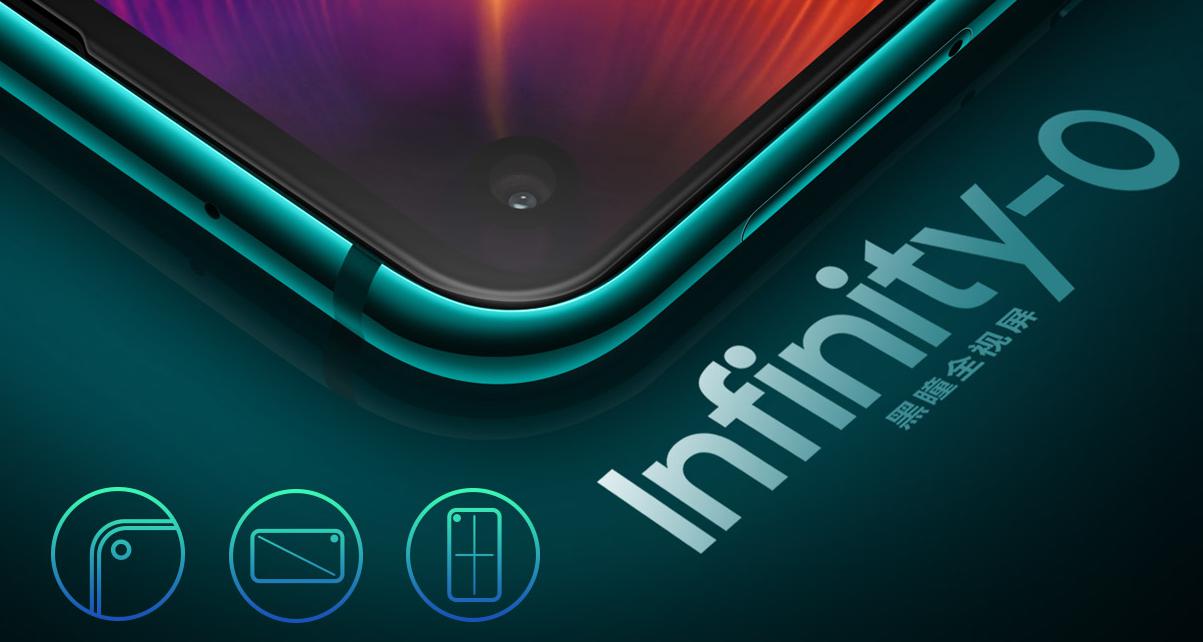
The Samsung Galaxy S8a will debut in China with a hole-punch spot for the camera [Image via Samsung]
The Samsung A8s is just for China right now while the View 20 isn’t being fully unveiled until December 26 in China and, for global audiences, January 22 in Paris. We also don’t have a price for either, but they do represent a new trend that could become widely-adopted across phones from other OEMs in 2019.
That’s certainly Samsung’s plan. The Korea firm is rolling the hole-punch out on the A8s, but it has plans to expand its adoption into other devices and series. The A8s itself is pretty mid-range, but that makes it an ideal candidate to test the potential appeal of a more subtle selfie camera since Samsung’s market share has fallen in China where local rivals have pushed it hard. It starts there, but it could yet be adopted in higher-end devices with global availability.
As the View 20, Huawei has also been pretty global with its ambitions, except in the U.S. where it hasn’t managed to strike a carrier deal despite reports that it has been close before. The current crisis with its CFO — the daughter of the company’s founder who was arrested during a trip to Canada — is another stark reminder that Huawei’s business is unlikely to ever get a break in the U.S. market: so except the View 20 to be a model for Europe and Asia.
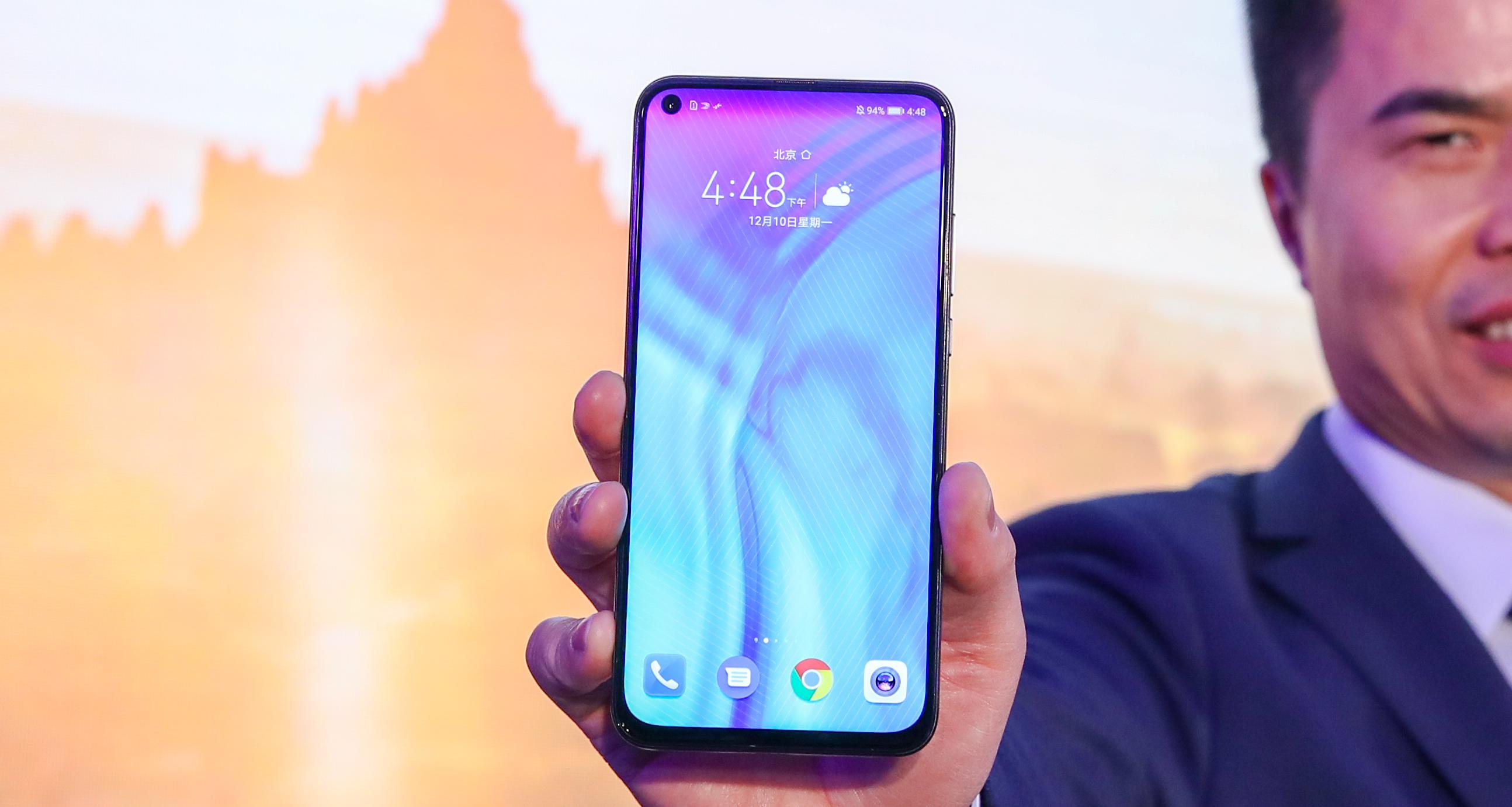
Huawei previewed its View 20 with a punch-hole selfie camera lens this week [Image via Huawei]
“This hole is not a traditional hole,” Huawei told Engadget.
Huawei will no doubt also talk up the fact that its hole is 4.5mm versus an apparent 6mm from Samsung.
Small details aside, one important upcoming trend from these new devices is the birth of the ‘mega’ megapixel smartphone camera.
The View 20 packs a whopping 48-megapixel lens for a rear camera which something that we’re going to see a lot more of in 2019. Xiaomi, for one, is preparing a January launch for a device that’ll have the 48-megapixels, according to a message on Sina Weibo from company co-founder Bin Lin. There’s no word on what camera enclosure that device will have, though.
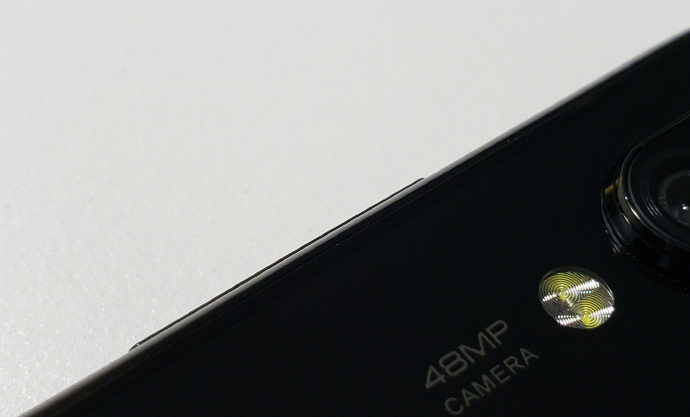
Xiaomi teased an upcoming smartphone that’ll sport a 48-megapixel camera [Image via Bin Lin/Weibo]
Read Full Article